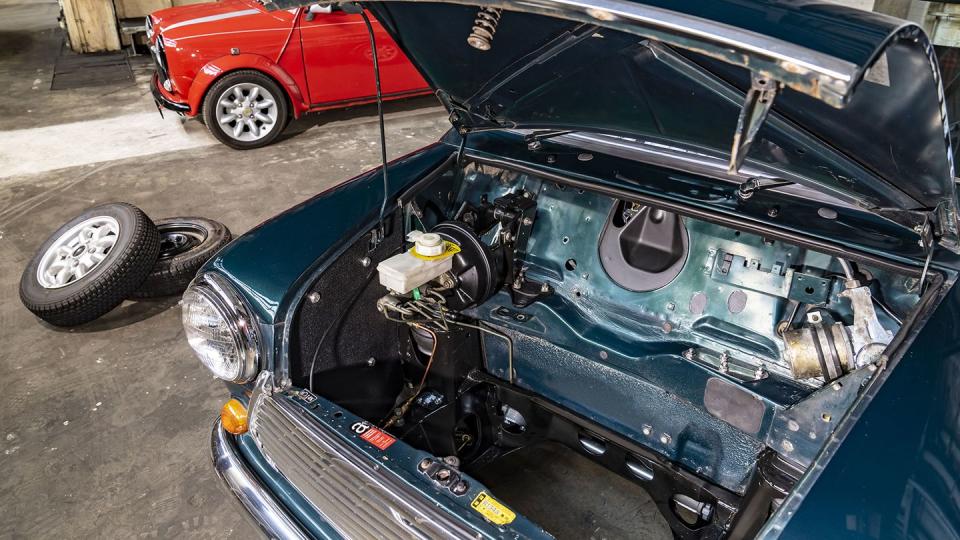Mini Offers Factory EV Swaps for Classic Models

Mini Recharged project offers factory EV drivetrain conversions that preserve the original engineering of the cars, offering reversible swaps.
The converted models from Mini Plant Oxford will offer a 100-mile range, just below that of the modern battery-electric Mini Cooper.
Some automakers are starting to offer EV swaps for classic models as emissions regulations threaten to keep some daily-driven classics out of city centers.
Mini will offer factory EV conversions for its classic models as part of its Mini Recharged effort, the automaker revealed this week. Classic Austin Mini owners will be able to commission a conversion that will replace the gasoline engine with an electric motor and a high-voltage battery, giving the Mini a range of about 100 miles once the conversion is complete. The motor will generate a continuous output of up to 90 kW, Mini says, which translates to 120 hp.
The conversion itself is advertised as reversible, designed without any permanent alterations, with the removed engine marked and stored in preparation for possible future use.
Curiously enough, the automaker does not state the capacity of the battery, only giving a range figure. Nor does it mention just where the battery goes in the car, as the Mini does not have all that much space under the floor, as anyone who has seen a classic Mini in real life will have realized by this point.
"The Mini Recharged project means a vehicle's life can be extended in a sustainable way. A classic Mini can now be given a new lease of life, accompanying its owner into the future, whilst maintaining its much-loved heritage," the automaker says.
Incidentally, the advertised 100-mile range of the completed conversion is not far off the 110-mile EPA-estimated range of the current Mini Cooper SE Electric, which was also not designed to be an electric model from the start. The modern Mini is certainly larger and heavier and features a 32.6-kWh battery, which is definitely not something the converted classic Austin Minis can hope to carry anywhere inside. A smaller battery is likely positioned in the gas tank niche.

Mini first presented an EV-converted classic model back in 2018 at the New York Auto Show, and since that time at a couple of third-party workshops have begun offering such conversions, with one promising a range of 125 miles courtesy of a 24-kWh battery placed in lieu of a gas tank.
"What the project team are developing preserves the character of the classic Mini and enables its fans to enjoy all-electric performance. With Mini Recharged, we are connecting the past with the future of the brand," said Bernd Körber, Head of the Mini Brand.
The automaker does not say just how much the conversion costs, but it's clear that there is demand for such swaps, with other automakers already embracing so-called cassette conversions that preserve the removed drivetrains and replace them with electric running gear tailored to fit. Such conversions are expected to become more popular over time, as cities introduce various emissions regulations that could keep daily-driven classics off the road.
One of the factors to consider, as with modern EVs, is perhaps the span of time in which the current battery tech could become dated if not obsolete, similar to personal computers in the 1990s, when technology was changing so rapidly that computers were becoming outmoded in a matter of months.
Battery tech is certainly evolving at a slower pace at the moment, but waiting even three or four years to perform such a conversion could yield a boost in range as more efficient battery tech arrives, if range is of high importance to the owner. So unless owners plan to update the battery every five or ten years, in about a decade there could be a population of classic electric Minis with somewhat dated 100-mile ranges. How that population of dated EVs will be valued in the classic car market compared to Austin Minis that have kept their gasoline engines is debatable. Unlike new cars, which are more or less disposable at a certain mileage, classics Minis that have made it this far will tend to live on, perhaps requiring periodic updates as new battery and motor tech arrives.


